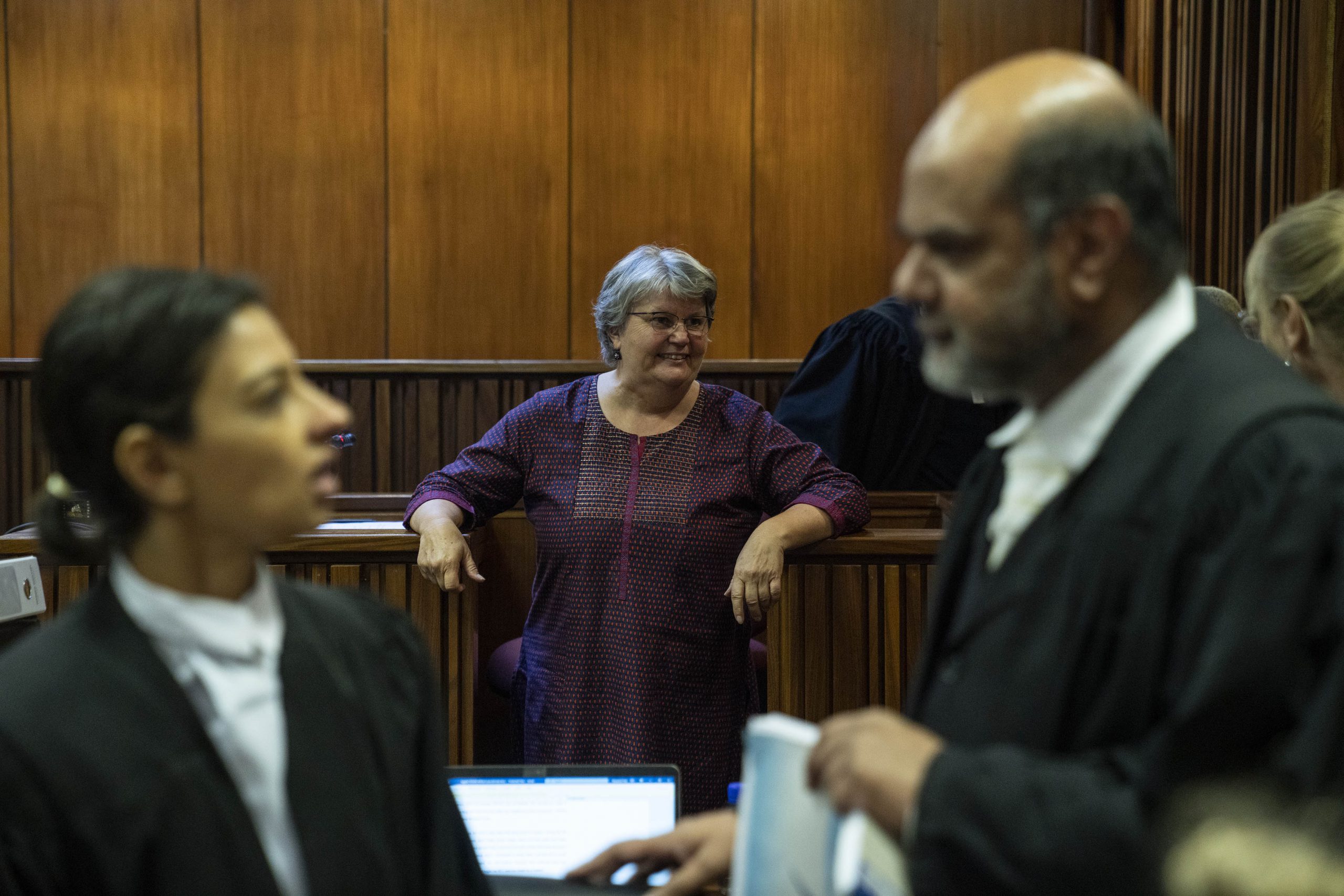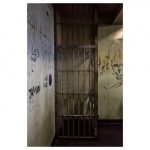The mistake that led to Neil Aggett’s death
Barbara Hogan was duped into creating a list of ‘close comrades’ that led to the arrest and detention of numerous anti-apartheid activists and, ultimately, the death of Neil Aggett.
Author:
30 January 2020

To some, Barbara Hogan is the veteran ANC member whose appointment as minister of health in 2008, following the ousting of Manto Tshabalala-Msimang, provided the much-needed relief for which so many activists had spent the dark years of the Thabo Mbeki administration waiting.
A woman who was determined to put South Africa’s health policy back on the road to sanity and who was named one of Time magazine’s 100 people of the year for her efforts. To others, Hogan is also the former minister of public enterprises who stood up to the state capture machinations of her boss, former president Jacob Zuma, and lost her job in 2010 as a result.
In 2015, Hogan again made headlines when, following Zuma’s axing of finance minister Nhlanhla Nene, she called on South Africans to “rise up and say enough is enough”. She made this call again at the memorial service for her longtime partner, Rivonia Trialist Ahmed Kathrada, after his death in 2017.
To the generation of anti-apartheid activists who were politically active in the turbulent post-black consciousness 1970s, Hogan was a hard-working, fiercely debating member of the white Left who was arrested in 1981 and became the first white women to be sentenced to prison for treason following her trial in 1982.
It was to recall this period in her life, and her brief but fateful interactions with doctor and trade unionist Neil Aggett, that Hogan appeared in courtroom 8F of the Johannesburg high court on Wednesday 29 January to give evidence before Judge MA Makhume at the reopened inquest into Aggett’s death.
Honest mistake
The story Hogan told was one of heartbreak, regret, physical and emotional torment, and ultimately of the heroic resilience and bravery that shaped the woman we know today but also threatened to end her. It was a story that saw Hogan plunged from an underground political life of skullduggery and intrigue worthy of a John le Carré novel into the bowels of the John Vorster Square police station, where she entered the absurd world of a Kafka tale and saw an honest mistake she had made threaten to bring much of the anti-apartheid underground crashing down around her.
Hogan was born on 28 February 1952. She grew up in Benoni, went to Catholic school and became politically active after she arrived at Wits Universty in 1970 to pursue a degree in development studies. She was involved in student protest movements against the apartheid regime and was first arrested for her efforts at the age of 18. She was instrumental in helping set up the Industrial Aid Society (IAS), which offered advice to black workers.
Hogan told the court that during the years of her early political awakening, the black consciousness movement and its leaders such as Steve Biko were the most visible and active opposition to the apartheid government. Following the student protests of 1976 and the death of Biko the following year, the “Vorster government cracked down heavily on opposition and banned all BC [black consciousness] organisations”.
Looking for a way to channel her anti-apartheid activities towards the broader organisational structures and benefits of the movement in exile, Hogan approached the ANC and was recruited into the party in 1977. She began her activities for the ANC under the watch of the party’s representatives in Swaziland before being transferred to the Botswana wing, where she fell under the jurisdiction of her former South African friends Marius Schoon and Jeanette Curtis, whom she had known before they left the country.
Broad mandate
Hogan was adamant that while she was committed to the goals and policies of the ANC, she did not want to join the organisation’s armed wing, Umkhonto weSizwe (MK), or participate in military operations. Her wishes were respected but as she recalled for the court, the ANC seemed unsure how best to use her services.
She reported to the organisation about the on-the-ground political developments taking place in South Africa but described herself as “working under discipline” for the ANC, not receiving instructions from the party but rather working within the aims of its broad mandate. She communicated with Schoon and Curtis by means of a dead letter box that she opened under a false name at the Illovo post office in Johannesburg.
It was a communication that she left in that innocuous looking suburban post box that would ultimately lead to her undoing and arrest, and the subsequent arrests of Aggett, his partner Liz Floyd and a large group of fellow activists. They would end up being interrogated and tortured at the hands of the Security Branch officers who ruled the feared halls and offices of the 10th floor of John Vorster Square.
Related article:
Interviewed in 2006 about the history of the building, her experiences there and its reputation as the worst of the apartheid regime’s state-sanctioned torture chambers, Hogan would describe John Vorster Square as “a place of evil, a place where dreadful things happened to people … it was a place where torture was carried out … It was a place where there was no mercy and it was a place where, basically, psychopaths hung out.”
Hogan, Floyd, Aggett and the others’ reckoning with these “psychopaths” was still only a terrifying, possible and hopefully avoidable bad dream when she first approached Aggett in early 1981. Schoon and Curtis had requested a meeting with the young, passionate and intellectually engaged union organiser they had been hearing so much about. Although she was friends with Floyd and had worked with her as well as Aggett’s close friend and comrade Gavin Andersson at the IAS, Hogan did not really know Aggett.
She relayed Schoon and Curtis’ request for a meeting with Aggett to Andersson, who seemed reluctant to set it up. Hogan did, however, manage to speak to Aggett about the possible meeting. But he told her that while he was sympathetic to the ANC, he could not possibly think of joining the organisation as this “would be detrimental to the Food and Canning Workers’ Union. Neil understood that the ANC was a banned organisation at the time and what the implications would be for the union should he be exposed as a member.”
Hogan described Aggett as an “incredibly calm, thoughtful person. His thinking was very clear and he was not a person who just submitted to someone’s way of seeing the world, just to please them. He was an independent thinker.”
‘Close comrades’ list
Shortly after her discussion with Aggett, Hogan became increasingly aware that she was under surveillance by the Security Branch. She recalled how after a meeting at the home of Curtis’ parents in Norwood in June 1981, she was followed by six cars. Spooked by the possibility of detention, she began making plans to leave the country. In preparation for this, she was informed in a message from people she believed to be members of the ANC in Botswana to prepare a report on her party activities and her concerns around the security of its Botswana link.
Related article:
She produced this report and sent it to the ANC believing that it would be used by the party to conduct an internal survey of the security risks of the Botswana operations. Hogan was then told that the organisation was concerned about “the security of the people I was working with politically and they needed the names of each person to do a security assessment”. She drew up this list, not knowing that she “had become ensnared in an MK network that had been infiltrated”.
The “close comrades” list that Hogan drew up included people she worked with who were active in the underground and above ground, whether “working under discipline or not”. The Security Branch arrested and detained all of the people on this list, including Andersson, Auret van Heerden, Cedric de Beer, Alan Fine and Fink Haysom. Other names, such as those of Floyd and Aggett, were included as what Hogan described as “advisory and/or reference people” that she worked with above ground.
Hogan sent the list to her supposed ANC Botswana contacts and continued her political work while she waited to receive instructions for her escape from South Africa. Instead, after returning from a politically related trip to East London on 22 September 1981, Hogan was met at her flat by Major Arthur “Benoni” Cronwright, the head of John Vorster Square’s infamous security police. He told her gleefully that the game was up and that he and his officers had her list in their possession.
Culture of fear
Cronwright was no ordinary bureaucratically slavish, pencil-pushing civil servant who saw his job as the head of the country’s most feared branch of the security police as merely another rung on his career ladder. He had what Hogan, other detainees and his former employees would recall as a visceral and maniacal hatred of the white Left, having been injured in the 1970s during a punch-up with student activists during a protest at Wits University in which he fell down the stairs of the Great Hall and hurt his back badly.
He was of Irish heritage and determined to show his Afrikaner employers that he could be as tough and ruthless as any of them in his fight against the rooi gevaar, the red or communist danger. He spoke Afrikaans as well, if not better than his peers and pursued a dogged Christian belief in which he saw himself as a moral crusader fighting for the angels against the godforsaken atheists of the Left.
He was also known for his snappy suits and manicured moustache, which he kept in a style reminiscent of one of the characters in the western films he loved to spend his days in his 10th-floor office watching at full volume. His officers were so terrified of his vengeful temper and tirades that they invoked the name of Hitler in their descriptions of him, and it was because of their fear of him and desire to please him that they would go to any lengths necessary to extract the information he wanted from detainees.

Cronwright saw Hogan’s list as the means by which he would single-handedly crush the white Left and bring them by the truckload to face apartheid justice. But while the list led to dozens of arrests, the detention of activists and the death Aggett, it also sowed the seeds of Cronwright’s downfall. It ultimately resulted in him losing his position at John Vorster Square following the outcry over Aggett’s death and the subsequent death of detainee Ernest Dipale in August 1982.
Cronwright would become a cautionary tale whispered among the former members of the security forces after 1994, who was rumoured to be living in poverty in a retirement home for former government employees in Tshwane. His legacy was that of a deadbeat, rambling madman whose name had once rung out fearfully and proudly across the shadow world of the security forces from his throne on the 10th floor.
According to his death certificate, which was presented on the first day of the reopened inquest, Cronwright died in 2012. But what happened to him in the three decades after Aggett’s death in 1982 remains mostly a mystery.
Deadly game
And so the activist and the enforcer found themselves playing a deadly chess game as each tried to establish which of them knew more about the bigger picture and who could see more moves ahead.
Cronwright’s crowing about the “close comrades” list and his vision of truckloads of detainees being tried for treason gave Hogan too much insight. So she concocted a story she believed would satisfy her interrogators but not endanger any of her comrades and give them time to plan their escapes. After several days of questioning, Hogan told the court that she “pretended to break down and this led to great celebrations among my interrogators because they believed they had ‘broken’ me. They bought me KFC and ice cream as a reward.”
Her interrogators soon caught on though, and there would be no more fried chicken and desert, only aggression, assault, endless hours of no sleep and the continuous repetition of questions with seemingly no satisfactory answers.
Eventually, the pressure would prove too much for Hogan and, believing her captors “would torture me to death for information I simply did not have”, she attempted suicide on 26 October 1981 by taking pills and tying an overlooked dressing gown cord around her neck. She was unsuccessful and subsequently moved from John Vorster Square to the Vereeniging police station, where she was “aggressively and at times violently interrogated for a full six-week period”.
‘Flowering of evil’
In December 1981, after being interrogated in East London, Hogan found herself in the charge office outside the second-floor cells of John Vorster Square, awaiting transfer to the Heidelberg police station. It was there, while waiting to be processed, that she caught her final glimpse of the calm, thoughtful person who had so impressed her months before.
As she remembers it now: “I saw Neil coming back to the cell section. He gave me a big smile and an amandla salute. I observed that his shirt was torn on the underside of the arm. The SB [Security Branch] officer … hurried me off and we had no further communication. This incident was how I came to know that Neil was also in detention and was also the last time I saw him alive.”
Related article:
By the time the inquest into Aggett’s death started in 1982, Hogan was 30 years old and serving her sentence for treason. She gave a statement to the Aggett family’s lawyers, but was not permitted to testify.
To this day, she deeply regrets her decision to compile the list and the consequences it had for her fellow activists. But Hogan’s story of what happened in the years leading up to her conviction shows the resilience and determination to challenge those in authority that would continue to serve her so well in the years following her release in 1990. It is also a story that echoes across the country in the lives and experiences of thousands of activists, and serves as a testament to the personal and psychological effects of the meetings between those committed to ending apartheid and those who eagerly and mercilessly waited for them in the bare rooms of interrogation centres wiped clean of blood.
As author and political detainee Breyten Breytenbach once wrote: “What happens in bare rooms where all the time has been twisted is not just dirty work – it is the heartrending flowering of evil which will profoundly modify all the actors.”
It is a sentiment that will continue to be borne out by the further evidence given Reverend Frank Chikane and other fellow Aggett detainees in the days and weeks to come, as the twistings of time are slowly unravelled in an effort to get closer to the truth of what happened to Aggett in the early hours of the morning of 5 February 1982 in the cells of John Vorster Square.



